
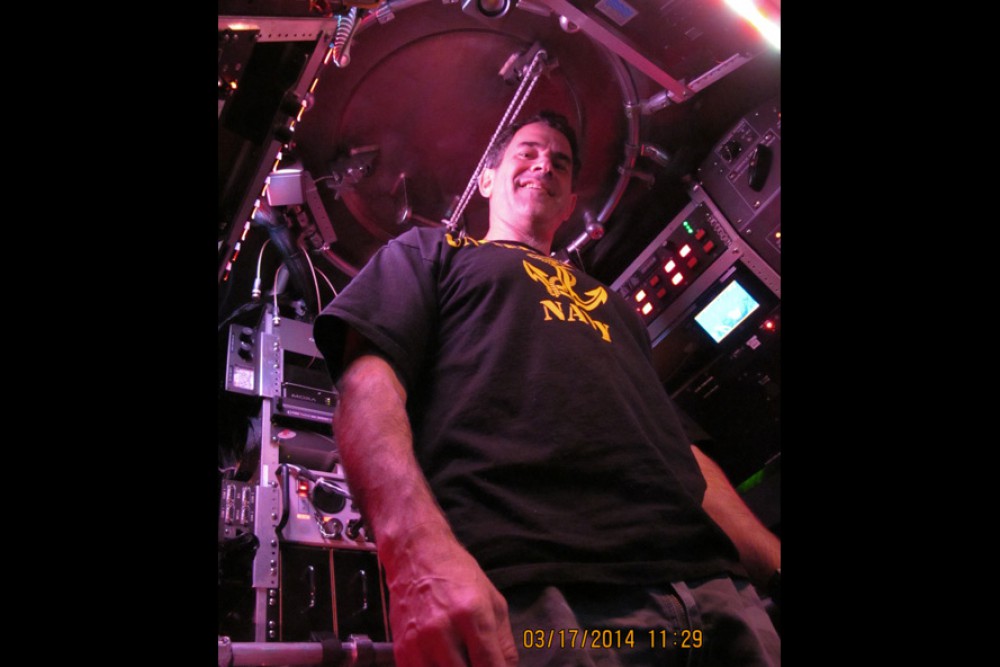

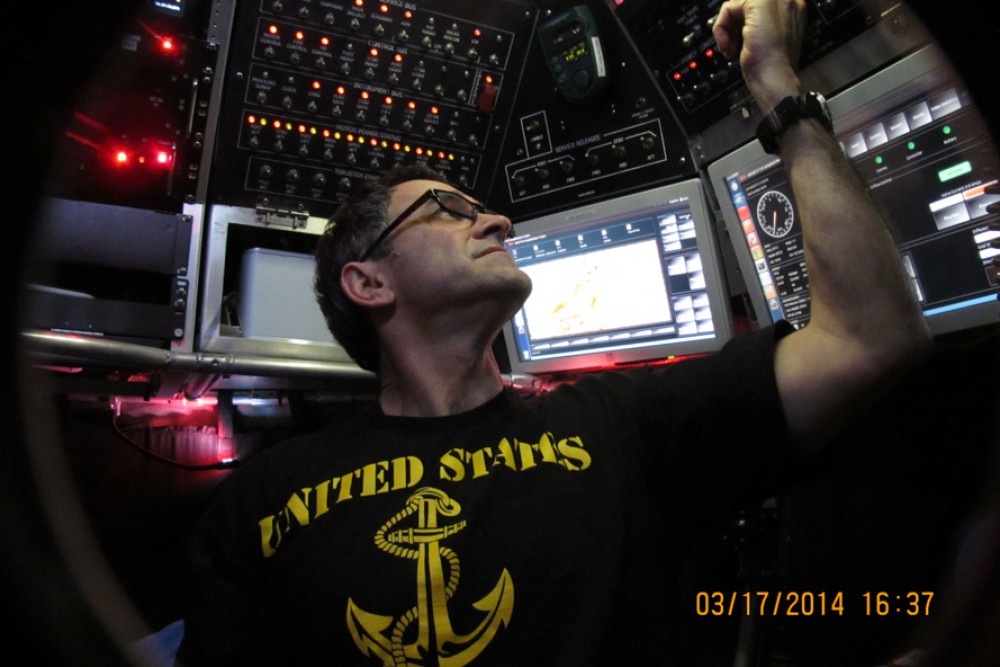

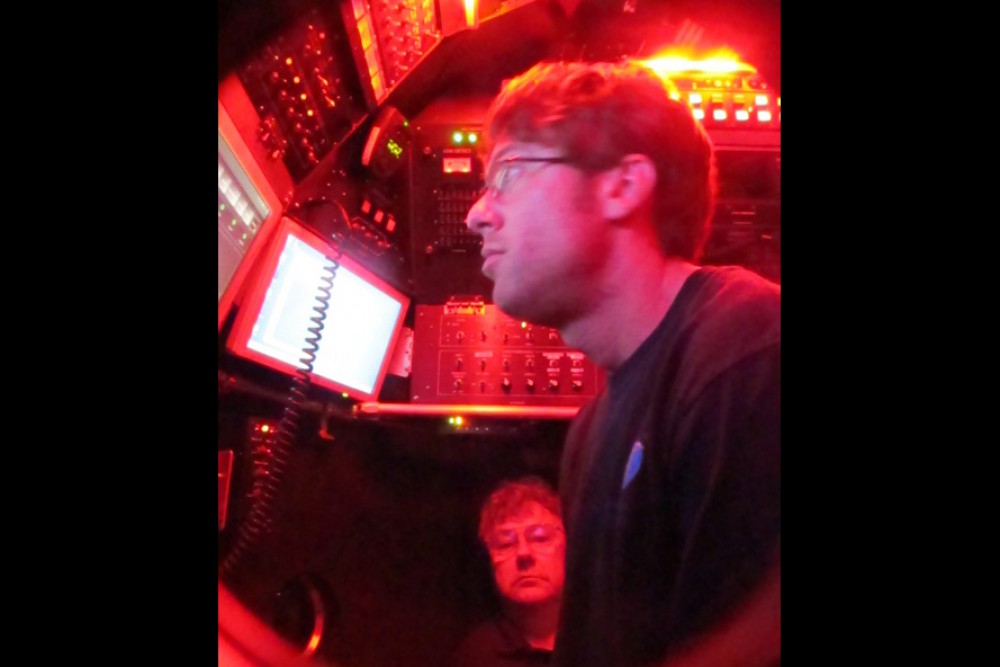
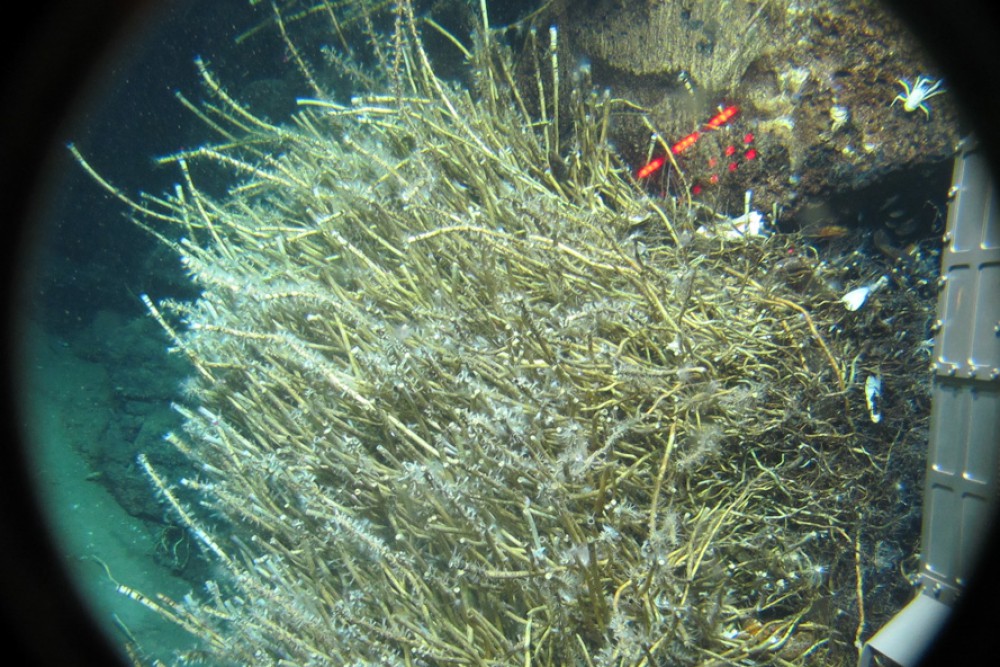
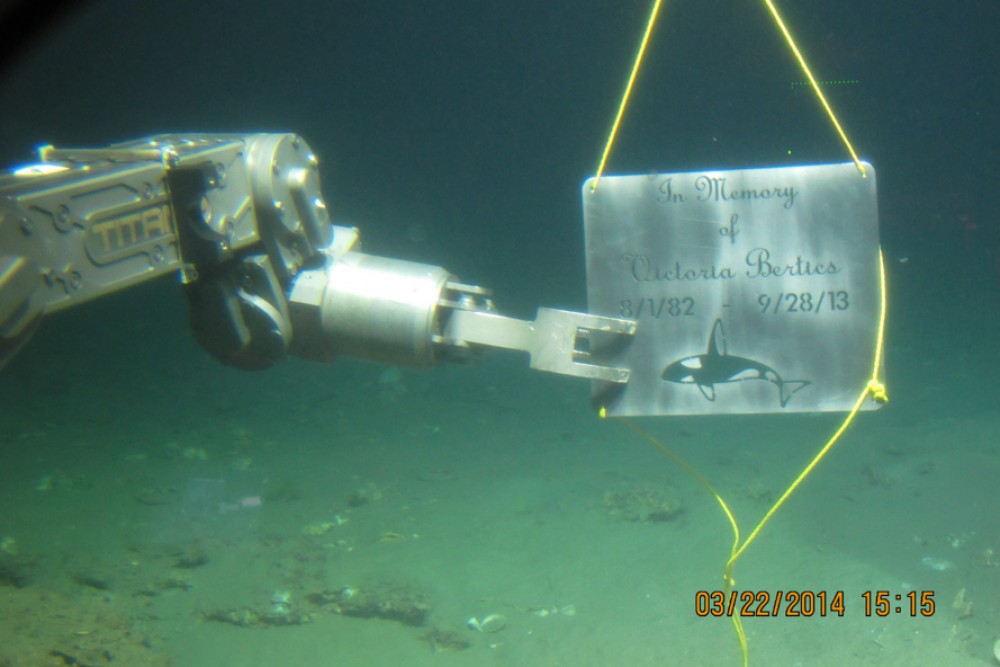
A slideshow of photos taken inside Alvin’s personnel sphere, nicknamed “the ball.”








A slideshow of photos taken inside Alvin’s personnel sphere, nicknamed “the ball.”

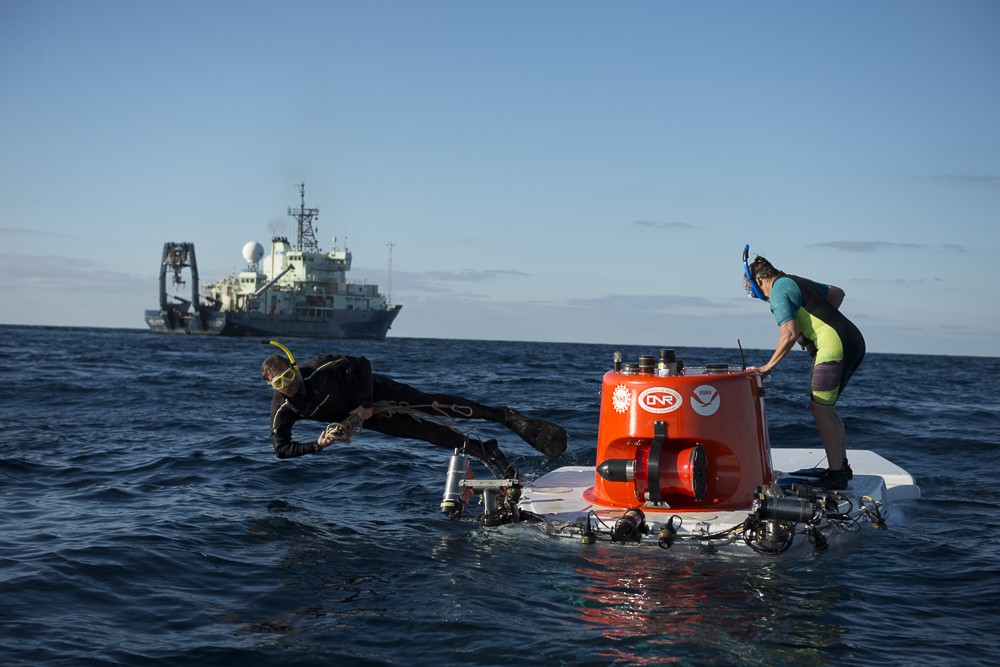
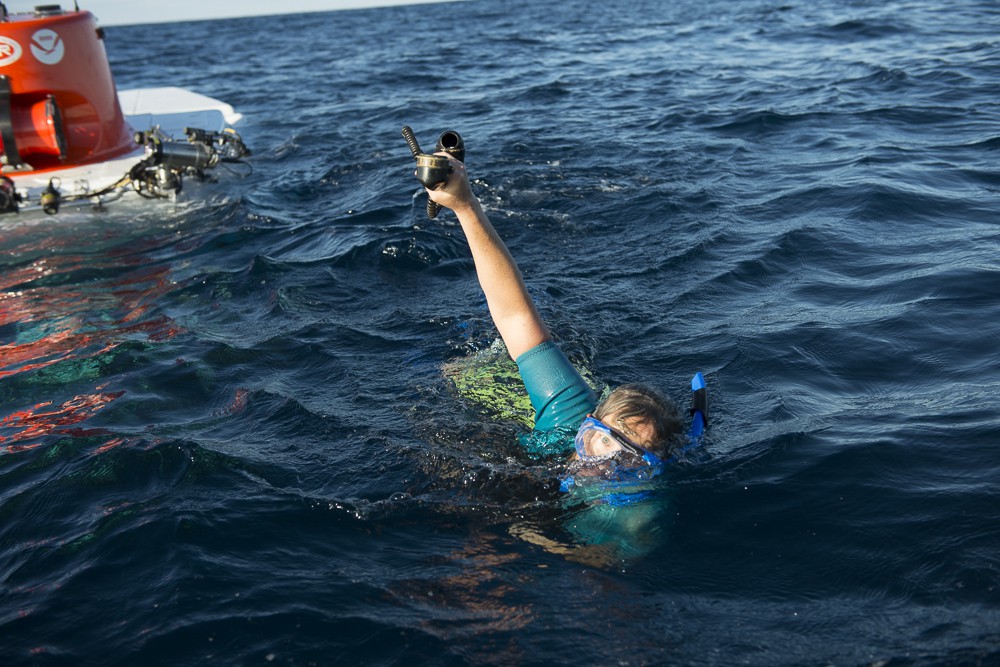
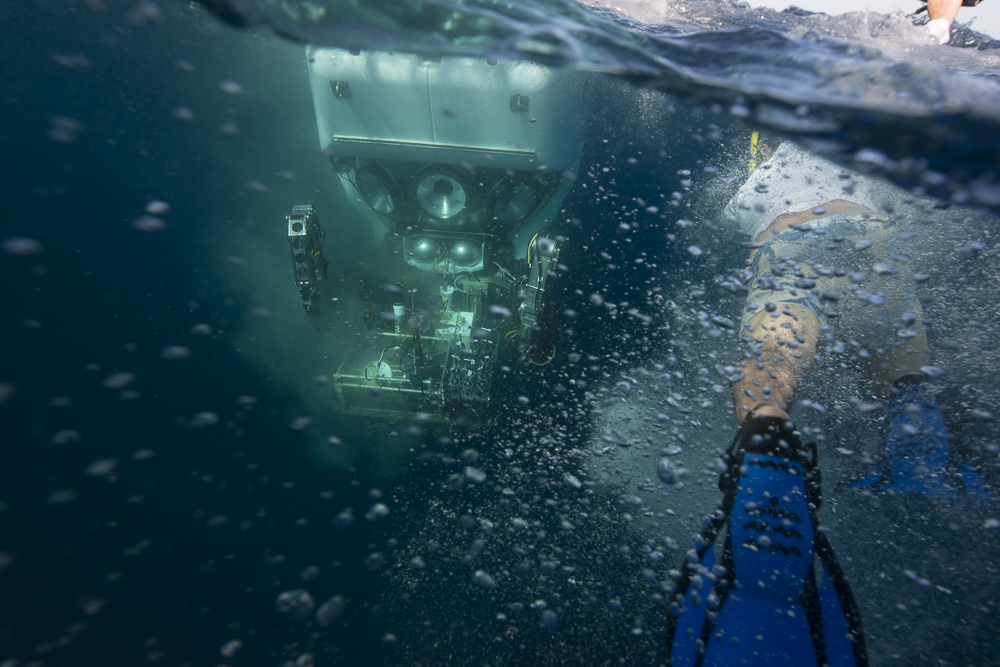
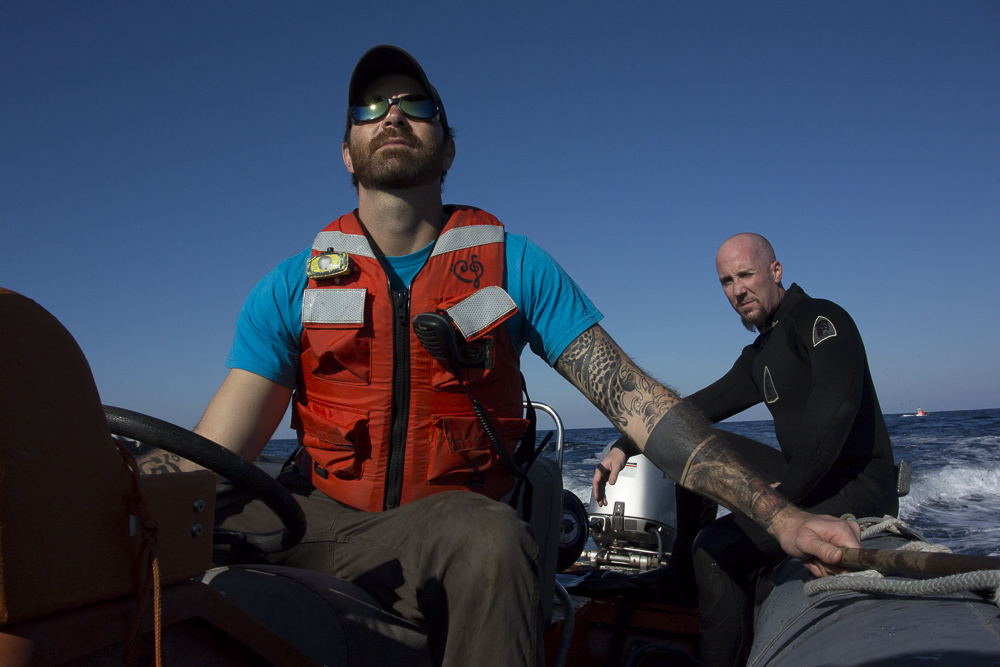


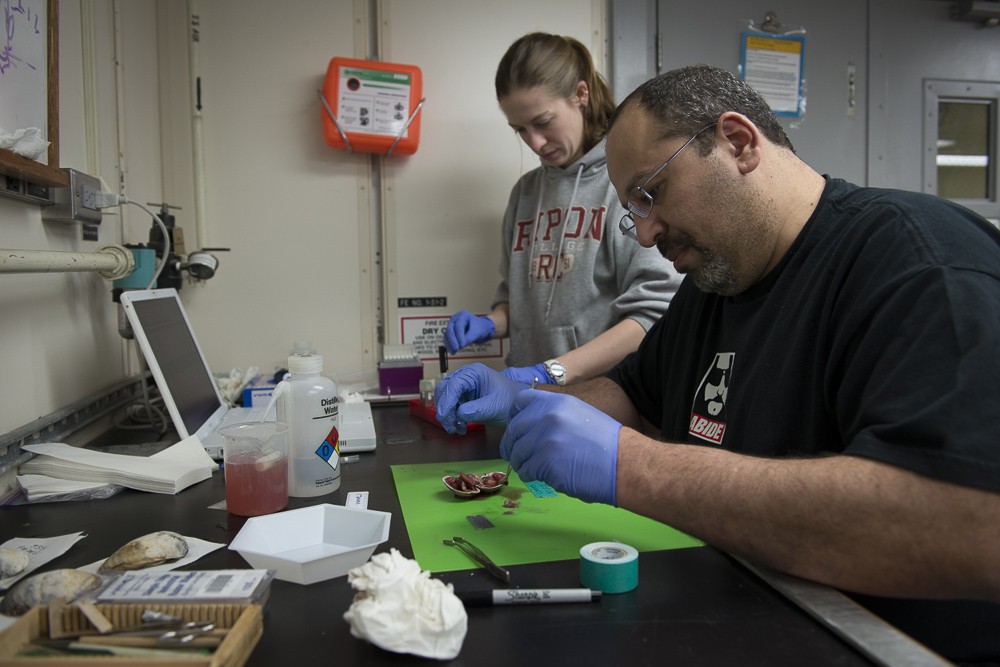
Two more veteran deep-sea scientists took their turn Wednesday to test-drive the upgraded Alvin. They came on this expedition to assess the sub’s new capabilities, find faults to be fixed, and report to their scientific peers. In a way, they were perfectly willing human guinea pigs. As much as they were testing Alvin, the sub was being tested on them. Read More →
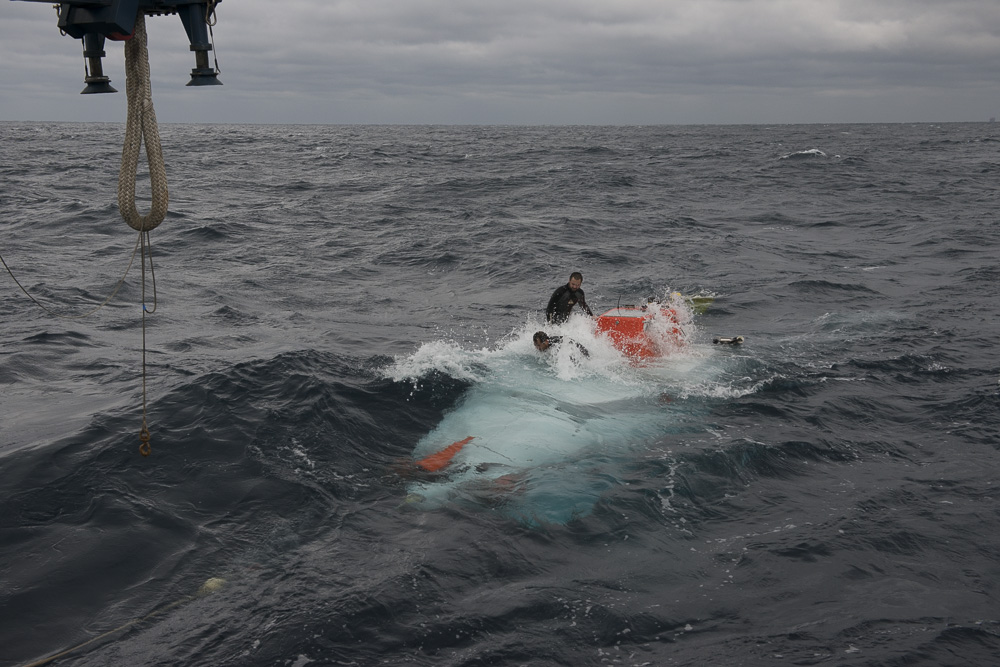

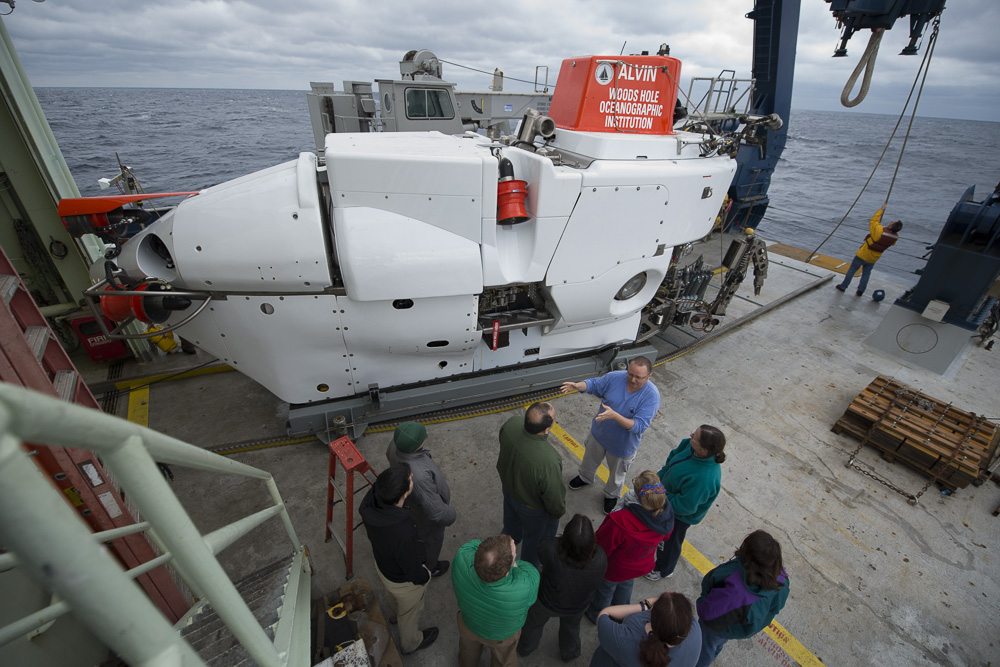
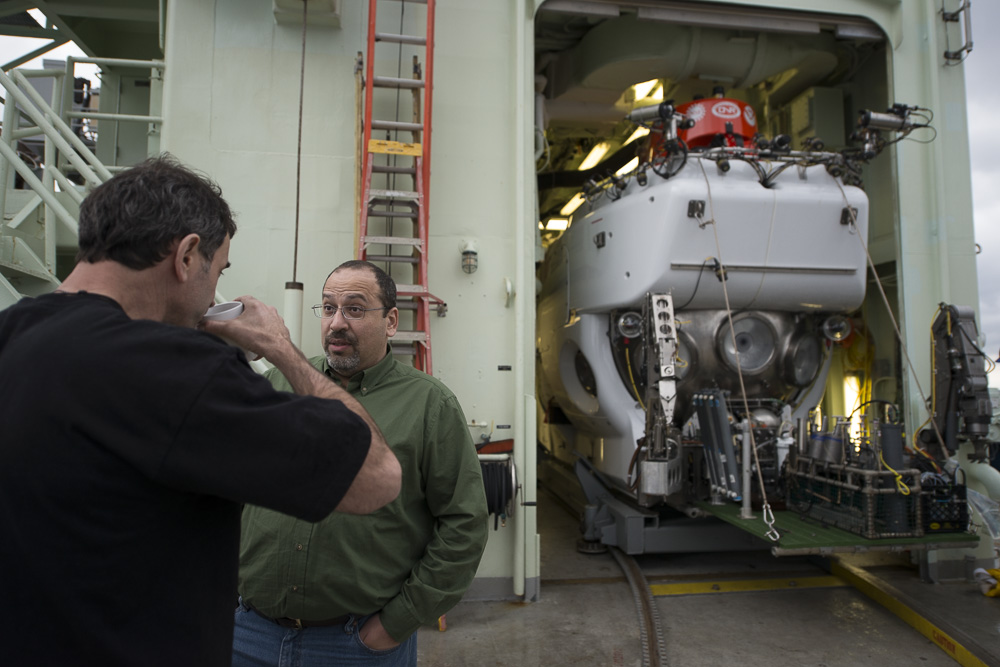
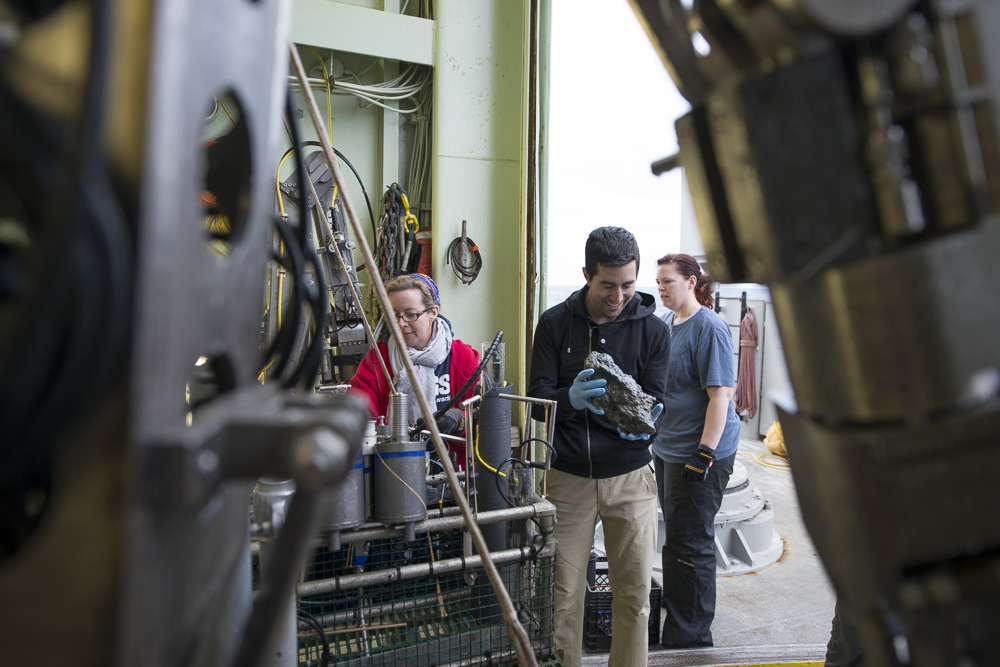
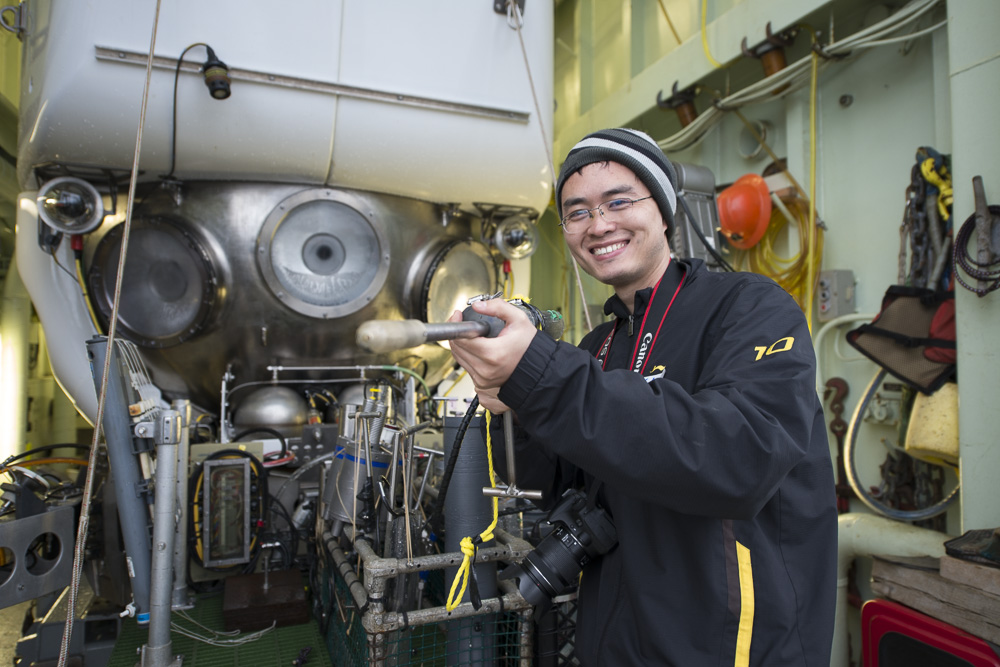

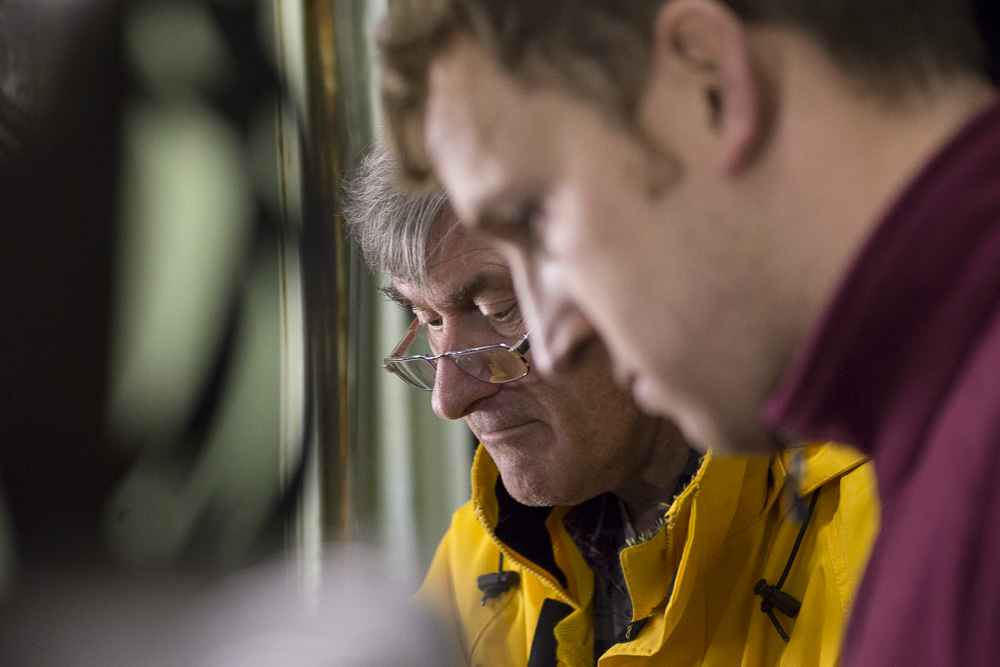
You’ve been driving the same car for two decades, then somebody hands you the keys to a 2014 version of the same model. The brand-new car has automatic controls you’ve never seen before, a stiffer ride that takes the curves tighter, and a larger interior that’s more comfortable, but still takes some getting used to. That’s what it’s like in the new Alvin.
From March 14 to 26, Peter Girguis, chair of DESSC (DEep Submergence Science Committee), will lead a group of scientists, including many veteran Alvin divers, from a host of research institutions to “road-test” the new vehicle on an expedition in the Gulf of Mexico. More »